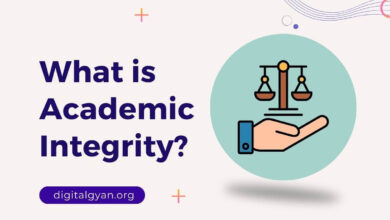What is Decision-Making? How to Make Effective Decisions?
Decision-making is the process of choosing a course of action among multiple choices to achieve the desired outcome.
The objective of decision-making is to focus human behaviour and dedication toward a future objective. It entails committing the organisation and its resources to a particular course of action that is believed to be adequate and capable of reaching a predetermined goal.

Importance of Decision Making
The key to achieving success in business is making decisions while reducing the related risks. Regardless of the type of organisation or role, judgements must be made frequently under uncertain conditions. The spectrum of decision-making strategies goes from intuition to statistical analysis. Extensive familiarity with similar events and the ability to determine the best course of action inform judgement. Statistics use numbers and probability theory to measure what has occurred, what is expected to occur, and the dangers involved.
What is Strategic Decision Making?
Strategic decision-making refers to the systematic process of selecting suitable courses of action in order to attain long-term goals and objectives within a competitive and ever-changing business landscape. The process entails the examination of both internal and external elements, the evaluation of potential risks and possibilities, and the strategic allocation of resources in order to make well-informed decisions. This decision-making methodology prioritises long-term benefits and strategic advantages, emphasising the creation of value and the attainment of a sustainable competitive edge.
In order to formulate strategic decisions, organisations commonly engage in the process of collecting pertinent data, information, and insights through various means such as market research, trend analysis, competitive assessments, and forecasting. Subsequently, a thorough assessment is conducted by the individuals, wherein they critically analyse many possible courses of action. This evaluation is based on several factors, including the feasibility of the options, their potential impact on business performance, their alignment with organisational goals, and the potential risks associated with each alternative. This review considers various elements like market dynamics, customer requirements and preferences, technical improvements, regulatory frameworks, and the strengths or weaknesses of competitors.
After the identification and evaluation of eligible choices, organisations proceed to choose the most suitable strategy or combination of strategies that will effectively contribute to the attainment of their long-term objectives. Potential strategies that organisations may consider encompass many approaches, such as product development or diversification initiatives, market expansion into new segments or regions, adoption of innovative technologies or practises, pursuing mergers or acquisitions to capitalise on growth prospects, implementing cost-cutting measures to boost operational efficiency, or increasing their worldwide footprint. The attainment of effective strategic decision making necessitates the presence of visionary leadership, the careful examination of both immediate and future consequences, and the continuous assessment of outcomes in order to make appropriate adjustments if needed.
What is Group Decision-Making?
Group decision-making is a process where a group of individuals discuss and brainstorm ideas to come to a consensus. This process can be used in both personal and professional settings and is often used when a decision that will affect a group of people needs to be made. There are several advantages to using this method, including the ability to pool diverse ideas and perspectives and the potential for increased buy-in from those affected by the decision.
Brainstorming
In this method, people get together to come up with various ideas. Participants in this method give their view of the situation. The purpose of this method is to get more ideas from different stakeholders.
First, it’s important to have a diverse group of people with different perspectives. This will help to ensure that all ideas are considered. Second, it’s important to have a facilitator who can keep the discussion on track and make sure that everyone has a chance to share their ideas. Third, it’s important to create a safe environment where people feel comfortable sharing their ideas, even if they are unpopular. Finally, it’s important to give each idea serious consideration before making a decision.
Focus Groups
The process of decision making within a focus group entails the collective participation of a group of people who are convened to exchange their viewpoints, perspectives, and personal encounters pertaining to a certain subject matter or concern. The objective is to get valuable perspectives and reach conclusions by using the combined knowledge and agreement of the individuals involved.
A focus group is best when the ideas that you get are relevant and in line with the company’s values. With focus groups, you will have to make sure that you interview different people from the organisation. A group of people will also be used to ensure that the views of all stakeholders are presented. It is possible that a group of stakeholders from different levels of the organisation may be used. In this case, the group may be divided into different work areas to ensure that they bring in the relevant information.
Group discussion
This is one of the best methods of generating ideas. The ideas that people come up with are then read aloud. People then comment on the ideas that are presented. In this method, more and more ideas are brought into the discussion. The discussion also helps you to present a balanced view of the situation. When groups are working together, there is a natural tendency to agree on some decisions. It is important to take note of the discussion.
Pairwise comparison
In this method, people are given a pair of items. They have to choose one over the other. The difference between the pairs is used as a measure of comparison. This method can also be used to evaluate and then compare the alternatives to an issue.
Delphi method
In this method, people are put into small groups. Each stakeholder group appoints an expert. Each stakeholder group provides input on the problem. The expert who oversees each stakeholder group is called the facilitator. The facilitator has the responsibility to review each stakeholder’s group report. A draft of a report is also provided to each stakeholder group. The facilitator will then conduct a process of questioning to clarify issues in the report. The facilitator will also provide feedback on the stakeholder groups’ input. The group has to review and agree on a decision that is supported by the stakeholders.
Limitations of Group Decision Making
Group decision making has several limitations that can hinder the effectiveness of the process and the quality of the decisions made. Here are some common limitations:
1. Groupthink: Groupthink occurs when the desire for consensus and harmony within a group leads to faulty decision making. Group members may suppress dissenting opinions or independent thinking, resulting in a lack of critical evaluation and potential oversight of important information.
2. Dominance of influential members: In some groups, certain individuals may have a stronger presence or hold higher positions of authority, leading to their ideas or preferences overshadowing those of others. This can undermine equal participation and result in biased or suboptimal decisions.
3. Time-consuming process: Group decision making typically involves multiple discussions, debates, and negotiations to reach a consensus. This can be time-consuming and may delay the decision-making process, especially when dealing with complex or contentious issues.
4. Social pressure and conformity: Some individuals in a group may feel pressured to conform to the majority opinion or go along with what they perceive as the popular choice. This can hinder diverse perspectives and critical thinking, potentially leading to compromised decision outcomes.
5. Cognitive biases: Individuals bring their own cognitive biases into group decision making processes. These biases may include confirmation bias (favouring information that confirms pre-existing beliefs) or anchoring bias (relying too heavily on initial pieces of information). These biases can cloud judgement and lead to errors in decision making.



